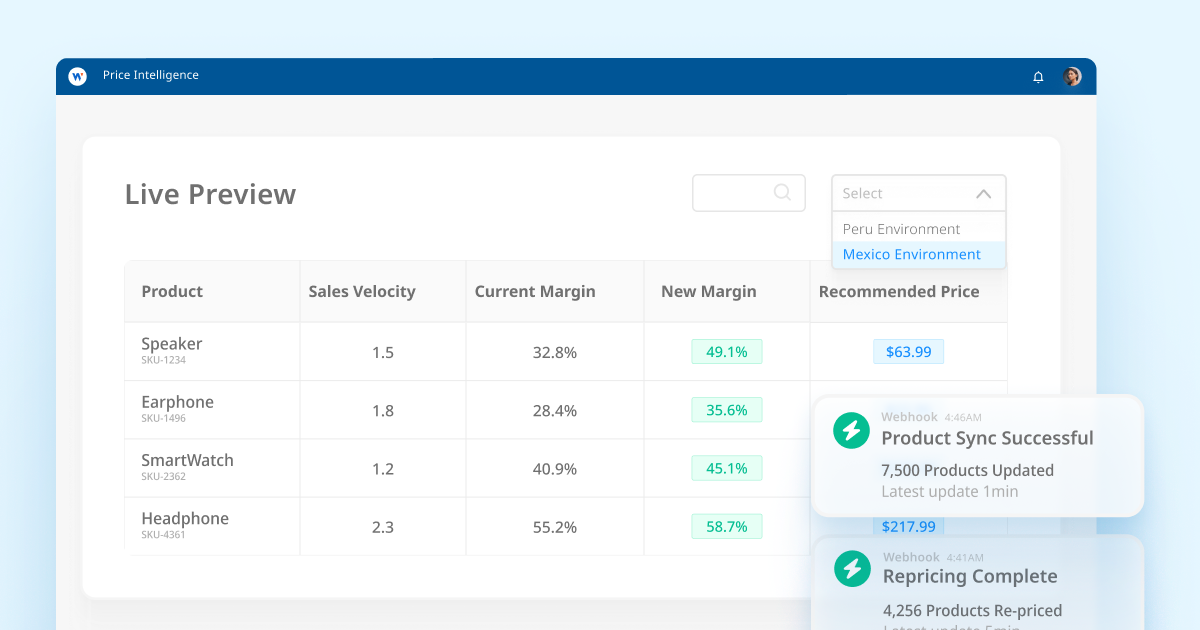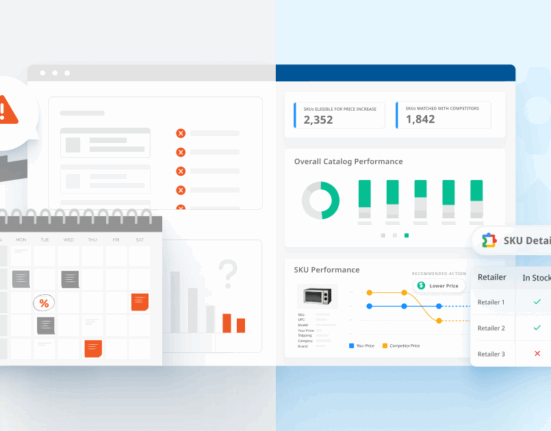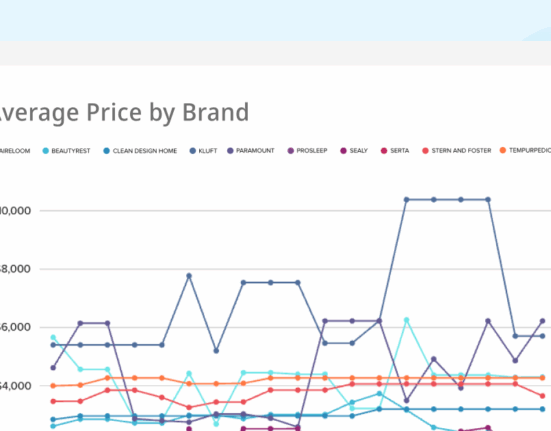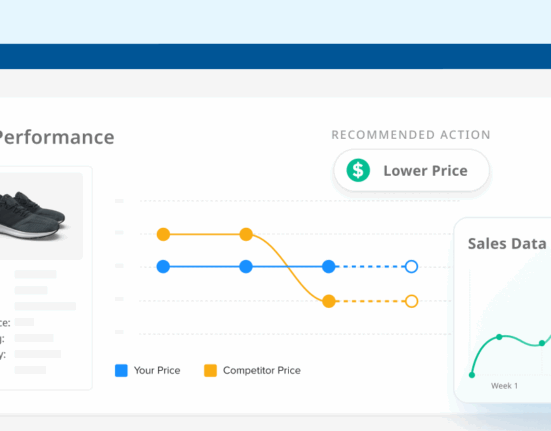Real-Time Pricing Tools for Retailers: Solving Modern Pricing Challenges
Major retailers are continuously running thousands of SKUs, juggling multiple marketplace sellers, and constantly under pressure to stay both competitive and profitable. Price wars erupt, events like “Cyber Day” explode in importance and everything happens in real time. For one top South American electronics and consumer‑goods retailer, this needed to change.
The Hidden Drain Behind Inflexible Pricing Tools
The retailer was working with a price‑management system that offered little visibilit and few insights to act on. It was clunky, confusing, and often ignored. Decisions were made on gut and guesswork. For a catalog of tens of thousands of products, reactive pricing strategies meant missed margins, missed opportunities and little control over price management in retail.
Manual tracking added to the headache. Someone would copy and paste dozens of URLs into Excel, capturing prices, shipping fees, delivery dates, payment‑plan options, an outdated approach when what’s really needed is a smarter system. And during peak sale events like Cyber Day? “You’d need an army of people,” as the deputy manager confessed. Complexity and uncertainty were everywhere.
Marketplace Mayhem: When Every Seller Calls the Shots
This retailer wore two hats: retailer and marketplace operator. Not only were they managing their own 2,500 products, but hundreds of third‑party sellers listed another 7,500. With sellers setting their own prices and inventory, control slipped through their fingers. And rising competition from other marketplaces only turned up the pressure.
Make Every Price Count with Wiser
When the retailer brought in Wiser’s price‑intelligence platform, here’s what changed:
- Real‑time price tracking and price analysis: Instant insights into competitor pricing across Peru and Mexico. There was no more playing catch‑up.
- Dynamic repricing: Rather than once‑a‑day updates, prices now shift 3–4 times daily around key events.
- Strategic dominance: Pricing became a tool for outmaneuvering competition, not just matching it.
In short, they moved from reactive to commanding, profitably and confidently.
What This Really Means for Your Business
- Speed matters: In e‑commerce, time-to‑market makes all the difference. If you’re repricing daily, competitors are probably repricing hourly (or real-time).
- Automation isn’t optional: For catalogs in the thousands, manual tracking is no longer viable. Smart retailers know: invest in dynamic tools or get left behind.
- Marketplace visibility is essential: Running your own marketplace? Your success depends on reigning in external seller pricing and sticking to your margin goals.
- It’s not just tech. It’s culture: You need both powerful platforms and teammates ready to act fast. A user-friendly interface and clear workflow matter just as much as automation.
In Summary: From Frustration to Control
The retailer went from manual tracking, sub‑par tools, and guesswork, to automated alerts, dynamic pricing, and market dominance. If you’re tracking a massive SKU base, handling marketplace dynamics, or just tired of lagging behind… it’s time to rethink your pricing stack.
Curious how they did it? Take a look at The Era of Profitability – Boosting Competitive Pricing and Market Agility with Wiser, the full use case that laid the groundwork for this transformation.









